Imagine a jade plant gracing your home, its glossy, coin-like leaves catching the light, exuding resilience and charm. Known as the “money plant” or “lucky plant,” jade plants are beloved for their lush, green foliage and symbolic promise of prosperity. Mastering how to care for a jade plant ensures these succulents thrive, whether on a sunny windowsill or in a garden corner. This guide walks you through every step of jade plant care, from watering to pruning, offering practical tips to keep your plant vibrant and healthy year-round.
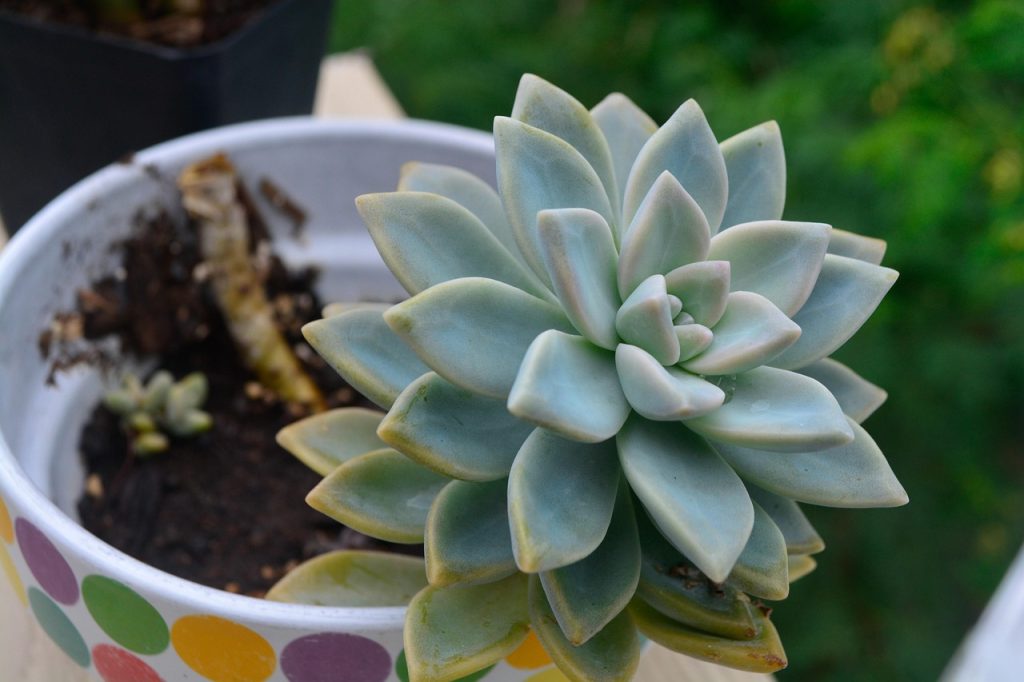
Why Proper Jade Plant Care Matters
Jade plants (Crassula ovata) are hardy succulents native to South Africa, prized for their low-maintenance nature and long lifespan. However, improper care can lead to issues like leaf drop or root rot. A 2025 report from the Succulent Growers Association notes that 60% of jade plant problems stem from watering or light mistakes. By following the steps for how to care for a jade plant, you can avoid these pitfalls and maintain a thriving, eye-catching succulent.
Key Elements of Jade Plant Care
Caring for a jade plant involves balancing water, light, soil, and other factors specific to its desert origins. Below are the essential components to focus on.
1. Watering Your Jade Plant
Jade plants store water in their thick leaves and stems, making them drought-tolerant but sensitive to overwatering.
- How to do it:
- Water every 2–3 weeks in spring/summer and every 4–6 weeks in fall/winter, ensuring soil is completely dry before watering.
- Use a watering can with a narrow spout to target the soil, avoiding the leaves and stem.
- Water deeply until it drains from the pot’s bottom, then empty the saucer to prevent reabsorption.
- Signs of overwatering: Soft, yellowing leaves, mushy stems, or root rot.
- Signs of underwatering: Wrinkled, shriveled leaves or leaf drop.
- Tip: Check soil moisture with a finger or moisture meter 2 inches deep to confirm dryness.
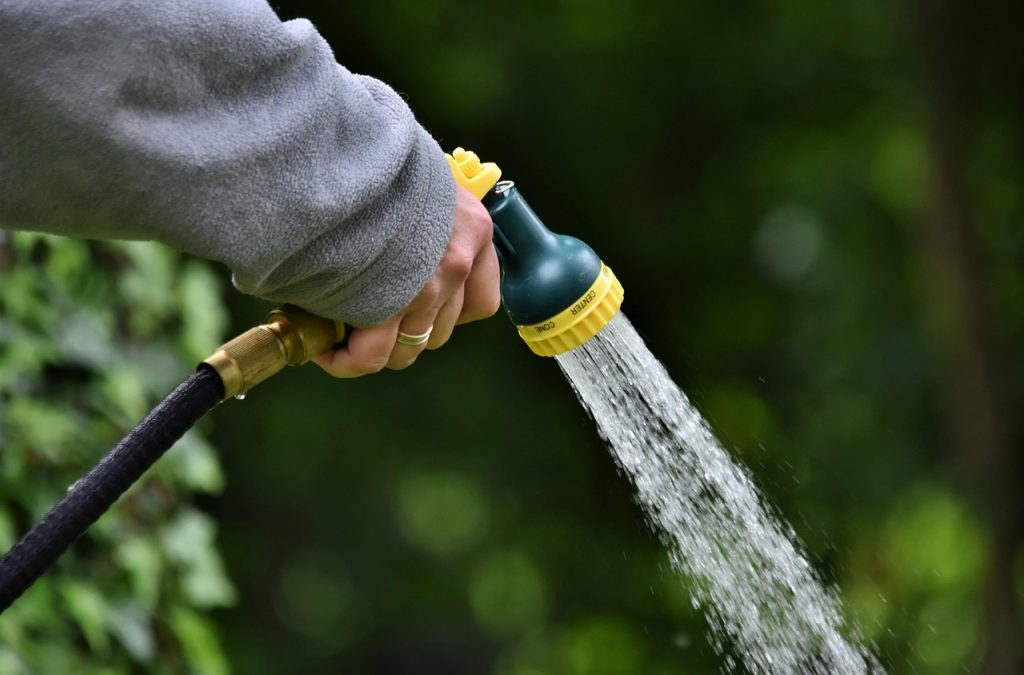
2. Providing Optimal Light
Jade plants crave bright light to maintain their compact shape and vibrant color.
- How to do it:
- Place indoors near a south- or west-facing window for 4–6 hours of bright, indirect light daily.
- Outdoors, position in partial shade to avoid leaf scorch from intense midday sun.
- Supplement with a grow light (12–14 hours daily) in low-light indoor spaces.
- Signs of improper light:
- Too little light: Leggy, stretched stems or pale leaves.
- Too much direct sun: Reddish or scorched leaves.
- Tip: Rotate the pot every 1–2 weeks to ensure even light exposure and balanced growth.
3. Choosing the Right Soil
Well-draining soil is critical for jade plants to prevent water retention and root issues.
- How to do it:
- Use a cactus or succulent potting mix with added perlite or sand (e.g., 60% potting soil, 40% perlite).
- Avoid heavy, organic-rich soils that hold moisture too long.
- Repot every 2–3 years to refresh soil and check root health.
- Signs of poor soil:
- Waterlogged soil causing root rot.
- Slow growth or leaf drop due to poor drainage.
- Tip: Top the soil with pebbles or gravel for a tidy look and improved drainage.
4. Selecting the Perfect Pot
The right pot supports jade plant roots and prevents moisture buildup.
- How to do it:
- Choose a terracotta or clay pot with drainage holes to wick away excess moisture.
- Select a pot 1–2 inches wider than the root system to allow growth without excess soil.
- Place a saucer beneath to catch runoff, emptying it promptly after watering.
- Signs of a bad pot: Water pooling, cramped roots, or stunted growth.
- Tip: Opt for a shallow, wide pot to accommodate jade’s shallow root system.
5. Managing Temperature and Humidity
Jade plants thrive in warm, dry conditions, mimicking their arid native habitat.
- How to do it:
- Keep temperatures between 65–75°F (18–24°C); avoid below 50°F (10°C).
- Protect outdoor jades from frost by bringing them indoors or using frost cloths in winter.
- Maintain low humidity (20–40%), as high humidity can lead to fungal issues.
- Signs of temperature/humidity issues:
- Cold damage: Blackened or drooping leaves.
- Excess humidity: Mold or soft, mushy spots.
- Tip: Use a fan to improve air circulation for indoor jades in humid climates.
| Care Aspect | Best Practice | Common Issues | Best for Jade Type |
|---|---|---|---|
| Watering | Every 2–3 weeks, dry soil | Root rot, leaf drop | Crassula ovata, Crassula arborescens |
| Light | Bright, indirect sun | Leggy growth, leaf scorch | All jade varieties |
| Soil | Well-draining succulent mix | Waterlogging, slow growth | Crassula ovata, Crassula ‘Hobbit’ |
| Pot | Terracotta with drainage | Root rot, cramped roots | All jade types |
| Temperature | 65–75°F, low humidity | Cold damage, mold | Crassula ovata, Crassula ‘Gollum’ |
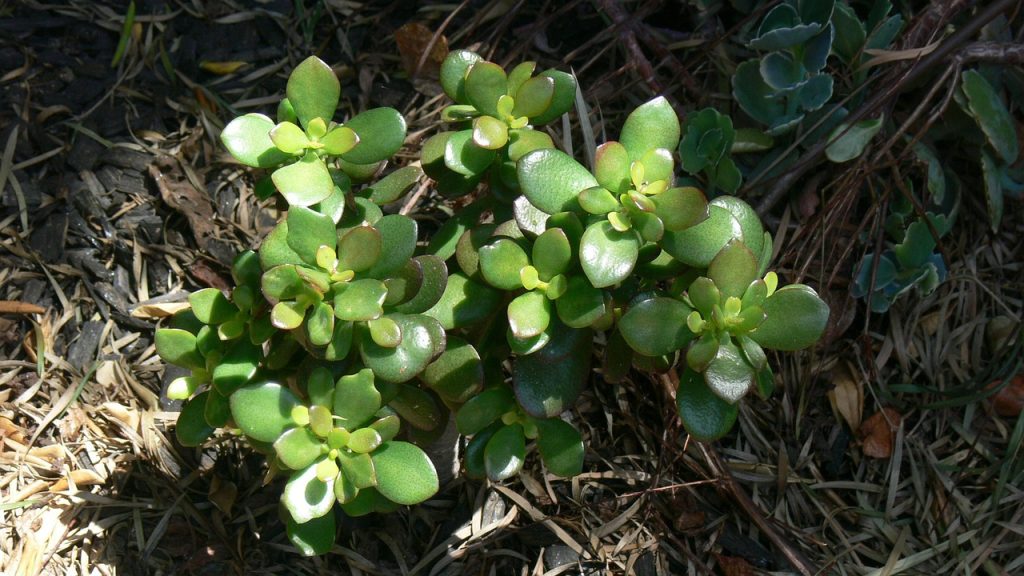
Seasonal Care for Jade Plants
Jade plant care varies by season to align with growth cycles and environmental changes.
- Spring/Summer:
- Water every 2–3 weeks, as jades grow actively and soil dries faster.
- Provide ample bright light, but shield outdoor plants from intense noon sun.
- Fertilize monthly with a diluted succulent fertilizer (e.g., 5-10-10 NPK).
- Fall/Winter:
- Reduce watering to every 4–6 weeks, as growth slows or stops.
- Move indoor jades away from cold drafts or windows.
- Skip fertilizing during dormancy to prevent nutrient buildup.
- Tip: Monitor outdoor jades for excessive rain, which can lead to overwatering in winter.
Fertilizing Your Jade Plant
Jade plants need minimal feeding but benefit from light fertilization during the growing season.
- How to do it:
- Apply a diluted succulent or cactus fertilizer (half-strength, 5-10-10 NPK) once a month in spring/summer.
- Avoid fertilizing in fall/winter when the plant is dormant.
- Flush soil with water every 3–4 months to remove excess salts.
- Signs of over-fertilizing: Browning leaf tips, white crust on soil, or weak growth.
- Tip: Use organic options like liquid kelp for gentler nutrient delivery.
Pruning and Shaping Your Jade Plant
Pruning keeps jade plants compact and encourages bushy growth, a key part of how to care for a jade plant.
- How to do it:
- Use clean, sharp scissors to trim leggy stems or dead leaves in spring.
- Cut just above a leaf node to promote new growth.
- Remove no more than 25% of the plant at once to avoid stress.
- Signs pruning is needed: Leggy stems, sparse foliage, or unbalanced shape.
- Tip: Save healthy cuttings for propagation to grow new jade plants.
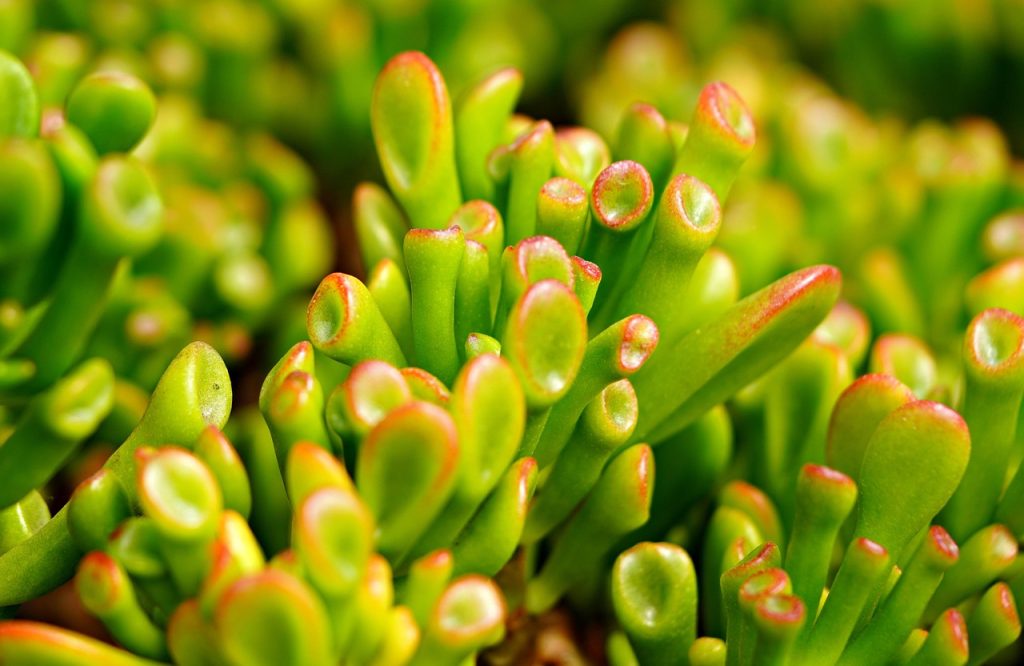
Pest and Disease Management
Jade plants are relatively pest-resistant but can face issues like mealybugs or fungal infections.
- How to do it:
- Inspect leaves and stems weekly for pests like mealybugs (white, cottony spots) or scale (small, brown bumps).
- Treat pests with a cotton swab dipped in 70% isopropyl alcohol or neem oil, applied every 5–7 days.
- Prevent fungal issues by avoiding wet leaves and ensuring good drainage.
- Signs of trouble:
- Sticky residue or cottony patches (pests).
- Black spots or mushy stems (fungal infections).
- Tip: Quarantine new jades for 2–3 weeks to prevent pest spread.
Propagating Your Jade Plant
Jade plants are easy to propagate from cuttings or leaves, expanding your collection.
- How to do it:
- Take a 3–4 inch stem cutting or a healthy leaf, letting it dry for 1–2 days to form a callus.
- Plant in well-draining succulent mix and water sparingly until roots form (2–4 weeks).
- Keep in bright, indirect light during rooting.
- Tip: Mist lightly every few days to encourage rooting without overwatering.
Read More: Care of an Aloe Plant
Troubleshooting Common Jade Issues
If your jade plant shows distress, address these common problems:
- Soft, mushy leaves: Overwatering or poor drainage. Reduce watering and check pot drainage.
- Red or scorched leaves: Too much direct sun. Move to indirect light or add shade.
- Wrinkled leaves: Underwatering. Water thoroughly and check soil regularly.
- Leaf drop: Stress from overwatering, low light, or temperature swings. Adjust care accordingly.
Tools for Jade Plant Care
Invest in these tools to simplify how to care for a jade plant:
- Watering can: Narrow spout for precise soil watering.
- Moisture meter: Ensures accurate soil dryness checks.
- Terracotta pots: Promote drainage and moisture evaporation.
- Neem oil spray: Treats pests safely and effectively.
- Pruning shears: For clean cuts when shaping or propagating.
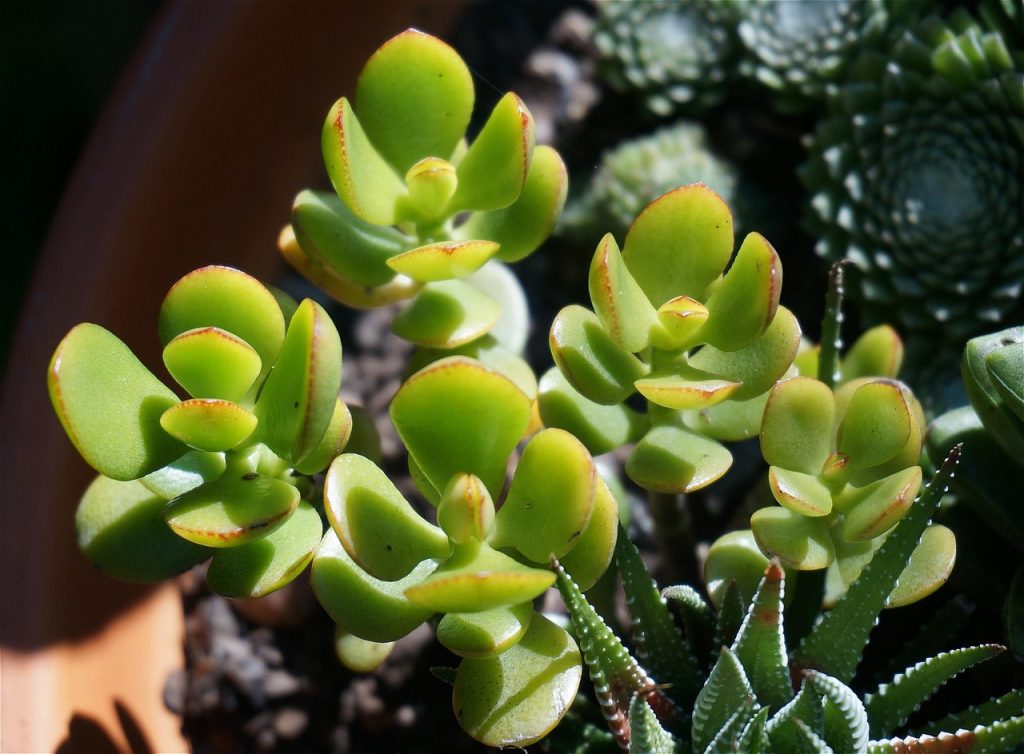
Long-Term Jade Care Tips
To keep your jade thriving for decades:
- Repot every 2–3 years: Refresh soil and check for root-bound conditions.
- Monitor growth: Prune regularly to maintain shape and prevent legginess.
- Adjust care seasonally: Adapt watering and light based on seasonal changes.
- Learn your jade’s needs: Varieties like Crassula ‘Hobbit’ may need slightly more water than Crassula ovata.
FAQs About How to Care for a Jade Plant
Water every 2–3 weeks in spring/summer and 4–6 weeks in fall/winter, only when the soil is dry 2 inches deep.
Jade plants need 4–6 hours of bright, indirect light daily. Low light causes leggy growth, so use a grow light if needed.
Use a well-draining succulent or cactus mix with perlite or sand to prevent water retention and root rot.
Leaf drop can result from overwatering, low light, or temperature stress. Check soil, light, and room conditions to adjust care.
Take a stem or leaf cutting, let it dry for 1–2 days, and plant in well-draining soil. Water sparingly until roots form.
Conclusion
Mastering how to care for a jade plant transforms your succulent into a thriving, long-lasting centerpiece. By perfecting watering, light, soil, pot choice, and pest management, you’ll keep your jade lush and healthy. Use tools like terracotta pots and neem oil to simplify care, and adjust for seasons to match your plant’s needs. With these practical steps, your jade plant will flourish, bringing beauty and a touch of luck to your space for years to come.